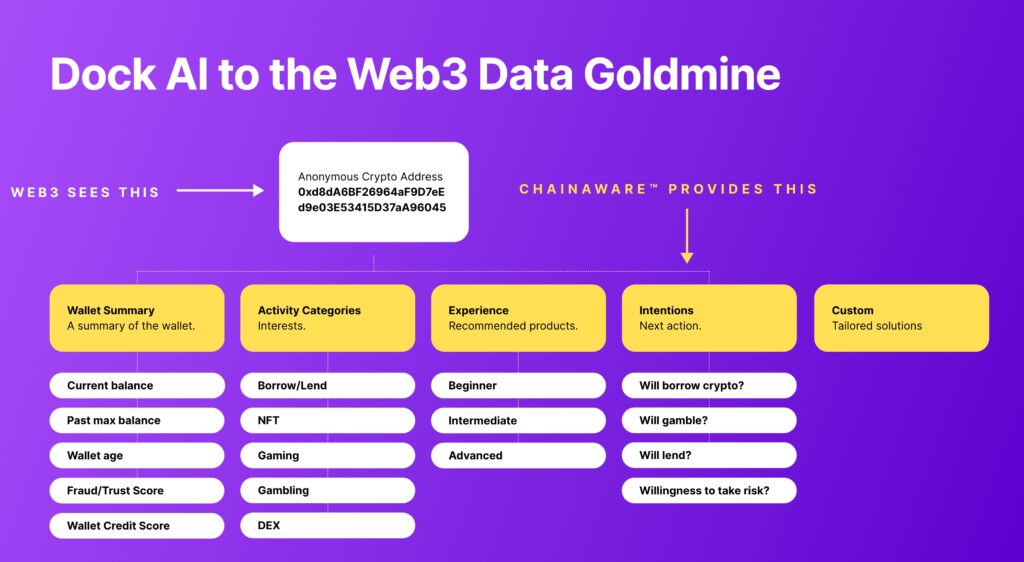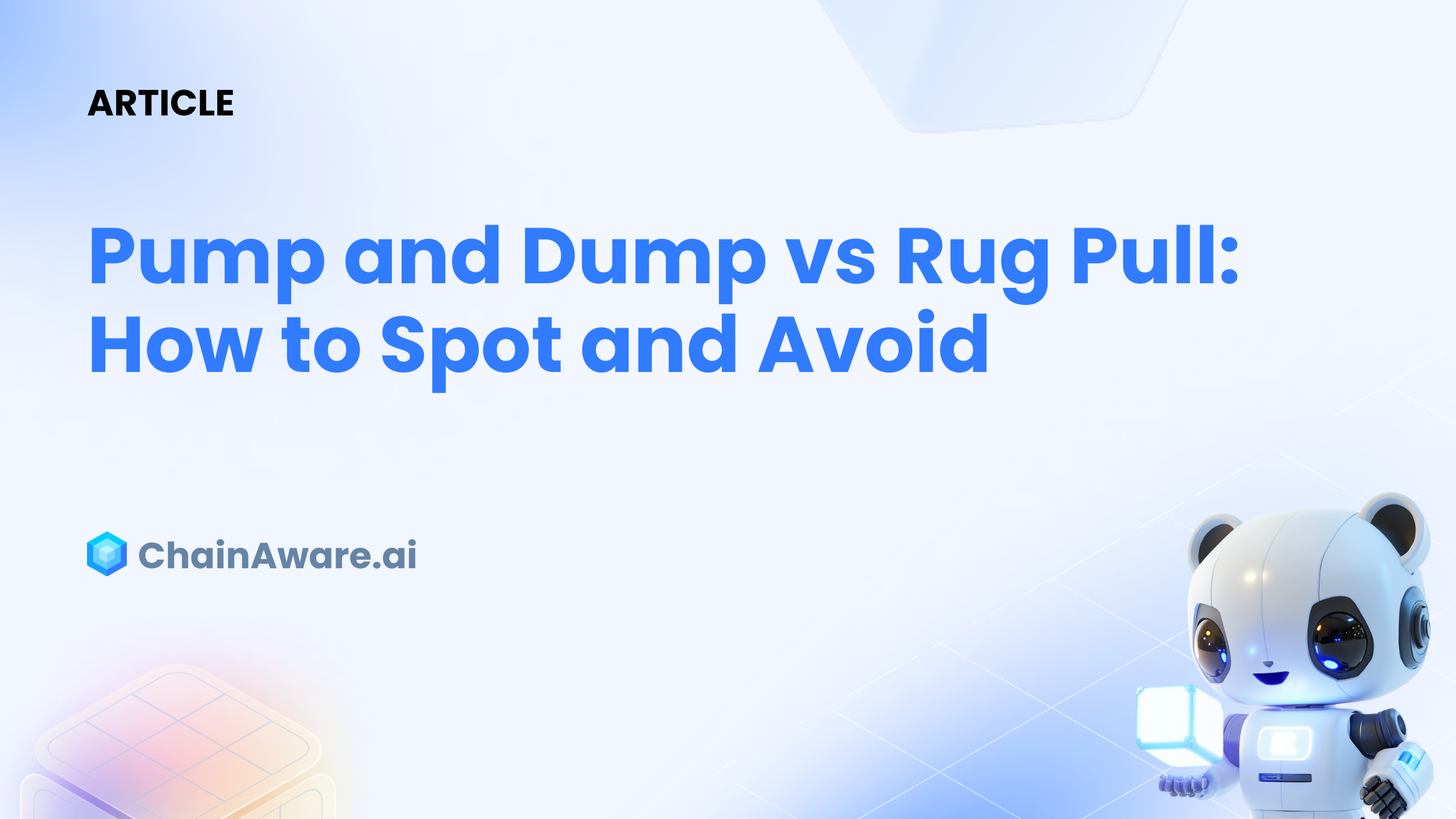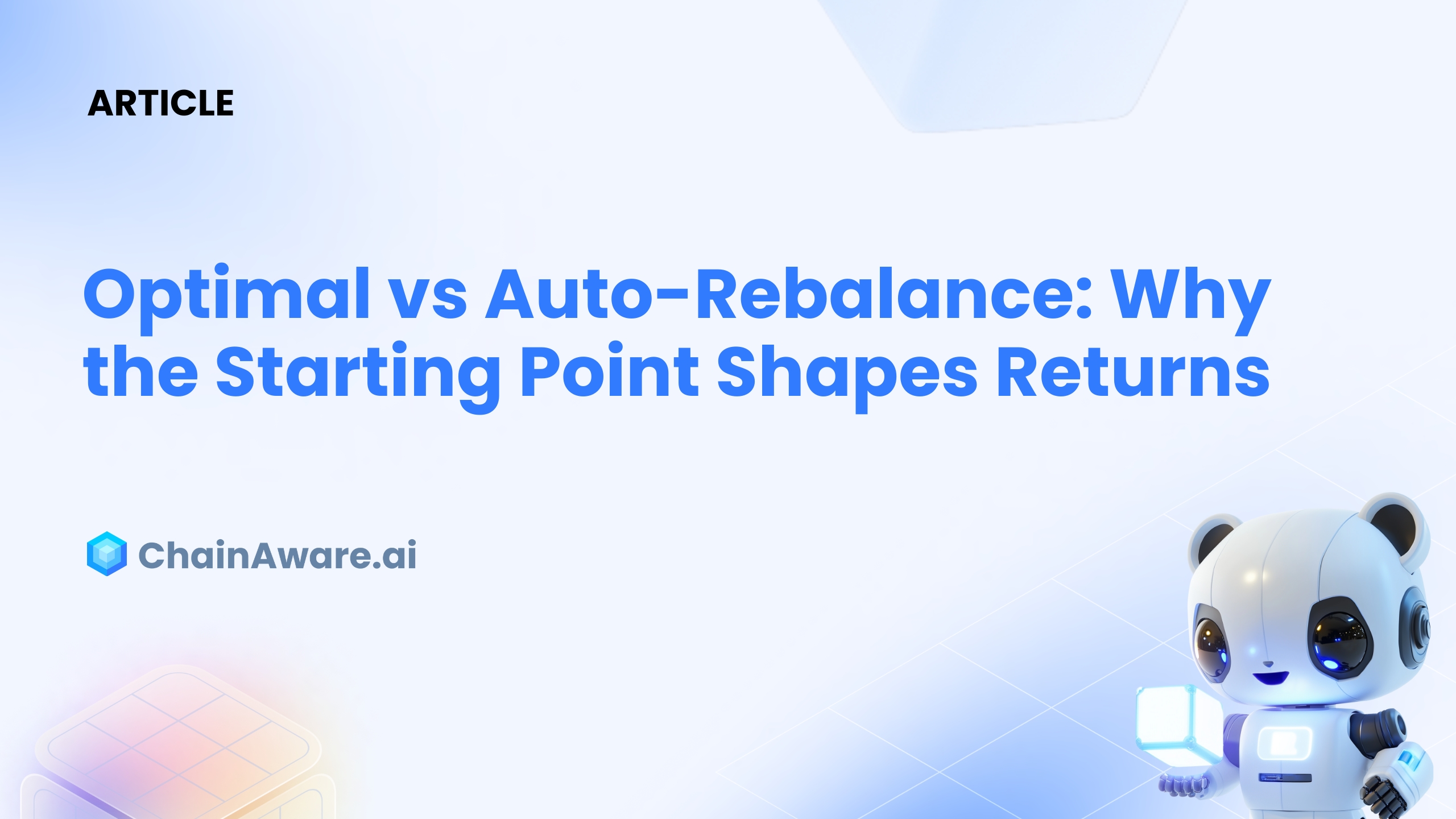Crypto and Web3 projects live and die by effective marketing. Crypto marketing isn’t just about running ads – it’s about building community trust, navigating unique regulations, and leveraging data in ways traditional marketers never imagined.
In this comprehensive guide, we’ll explore practical Web3 marketing strategies that DeFi marketing and crypto project founders can use to promote their ventures successfully. From targeted advertising and community building to content, PR, and the role of AI (with a subtle nod to tools like ChainAware.ai), you’ll learn how to stand out in the competitive crypto space.
Understanding the Crypto Marketing Landscape
What makes crypto marketing different from traditional marketing?
For starters, the playing field and the rules of engagement are not the same. All major social media and ad platforms have strict guidelines on crypto advertising, a legacy of past ICO scams and regulatory scrutiny.
This means crypto projects often can’t rely on the usual Facebook or Google ad blitz without jumping through compliance hoops. Marketing a token or DeFi app is a tougher job that requires industry-specific knowledge and careful strategy.
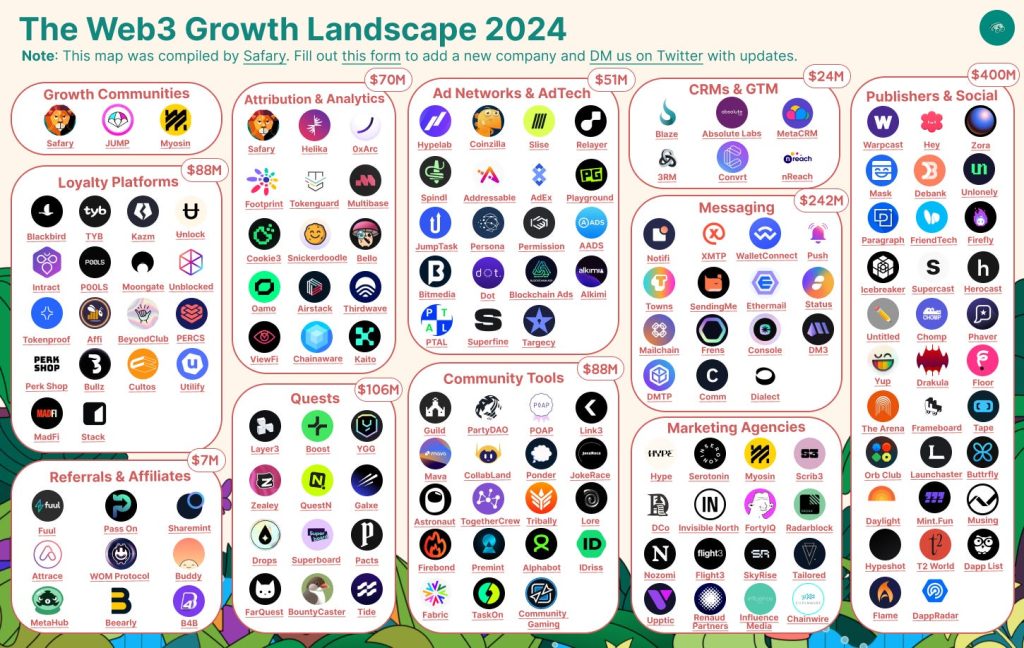
Another key difference is the emphasis on community and decentralization.
Traditional marketing might focus on direct conversions or sales funnels, but crypto marketing thrives on grassroots community building and shared values. Success often hinges on an engaged community of users and investors who believe in the project’s mission.
Decentralization and transparency are not just buzzwords – they’re part of the appeal. Crypto audiences expect openness (like open-source development updates or transparent tokenomics) and peer-to-peer interaction rather than top-down brand messaging. In other words, trust and credibility are paramount in a sector where skepticism runs high.
Additionally, crypto marketing leverages data in ways traditional marketing can’t. Blockchain technology provides unprecedented data transparency and targeting opportunities. For example, projects can analyze on-chain data (wallet transactions, DeFi activity) with tools like ChainAware.ai Web3 Marketing Agent to identify and target potential users.
This makes crypto advertising potentially more targeted than traditional advertising, since you can use data from exchanges and wallets to find an audience already interested in crypto. It can also be more global in reach – a project can tap into a worldwide investor community 24/7, unconstrained by borders or middlemen in ad delivery.
Key trends in Web3 and DeFi marketing
The crypto marketing landscape is constantly evolving, and staying on top of trends is crucial. As of 2024-2025, several trends are shaping how Web3 projects promote themselves:
Token Incentives & “MarketingFi”
Many crypto projects incorporate token incentives directly into marketing. Airdrops, yield farming, and social farming campaigns (where users complete tasks for rewards) are now common to drive user acquisition. These strategies create a two-way interaction with the community by giving users a stake in the project’s success. In fact, terms like airdrops and social farming have become essential parts of Web3 marketing vocabulary, blurring the line between marketing and product engagement. A well-timed airdrop (like Uniswap’s famous UNI token airdrop) can generate huge buzz and user loyalty.
Rise of Web3 Influencers and Communities
Crypto Twitter (now X), Discord servers, and Telegram groups are the new billboards. Influencers who specialize in crypto or DeFi have massive sway (more on this later), and community-driven initiatives like AMAs (Ask Me Anythings) or DAO votes double as marketing events. In 2025, we see Web3 influencer marketing, community AMAs, and crypto-specific advertising among the top trends. Projects that harness influential voices and foster interactive communities tend to outpace those that rely only on one-way communication.
Data-Driven and AI-Powered Marketing
As the industry matures, there’s a shift toward data-driven decision making in marketing. Advanced analytics and AI are being used to segment users and personalize outreach at scale. Blockchain provides transparency and traceability, which marketers can use to refine targeting. This has given rise to platforms and tools (like ChainAware.ai) that specialize in blockchain analytics for marketing. By analyzing on-chain behavior, these tools can predict user interests or intentions, enabling highly tailored campaigns. We’ll discuss this in depth in the section on ChainAware.ai’s AI-driven approach.
Regulatory Compliance and Security Messaging
With increasing regulation of crypto, marketing messages now often highlight compliance and security. Projects emphasize audits, licenses, and security features to build trust with a skeptical public. Marketing teams must also keep up with ad policies (which are in flux – for instance, Twitter under Musk has been more crypto-friendly, while other platforms still restrict crypto ads). A trend for 2025 is “marketing safe” – ensuring all promotions are legally compliant and not misleading. This not only avoids legal trouble but is also crucial to gain the trust of an audience where 63% of adults have little to no confidence in crypto’s safety.
In summary, crypto marketing operates in a fast-paced, community-centric environment with unique constraints and opportunities. Understanding this landscape is the first step to devising a winning promotion strategy for your Web3 project.
Core Strategies for Effective Crypto Marketing
Now that we’ve set the stage, let’s dive into the core strategies that crypto and Web3 project founders should focus on. Effective crypto marketing is multi-faceted, combining targeted advertising, community engagement, influencer partnerships, content creation, and public relations. Here’s how to execute each of these in a practical, impactful way.
Targeted Advertising & Data-Driven Marketing
Traditional digital ads can be a shot in the dark – but in crypto, we have novel ways to aim those shots with precision. Targeted advertising in the Web3 world means reaching the right users (say, NFT collectors, yield farmers, or traders) based on on-chain behavior and interests, rather than just demographics. This is where data-driven marketing shines.
Benefits of blockchain-based advertising
Blockchain technology enables new advertising models. For example, the Brave browser and its Basic Attention Token (BAT) pioneered a model where users opt-in to ads and get rewarded, aligning incentives between advertisers and viewers. Decentralized ad networks are emerging, though still maturing, which promise less fraud and more transparency in ad delivery.
But even without using a crypto-native ad network, blockchain data can supercharge your ad targeting. Because wallets and transactions are public (albeit pseudonymous), you can glean insights into user behavior. Imagine being able to target all wallets that have used a competitor dApp or all addresses that hold a certain NFT collection – this granular targeting is becoming possible with the right tools.
Using wallet analytics and AI for better targeting
This is a game-changer for crypto marketing. AI models can analyze thousands of wallets and detect patterns that indicate what a user might be interested in next. For instance, if someone frequently uses DeFi lending protocols, they might be a prime candidate for a new DeFi lending platform. If another wallet shows NFT trading activity, perhaps they’d be interested in your new NFT marketplace.
AI-driven platforms like ChainAware.ai specialize in exactly this: they segment crypto wallet users by behavior and predict future actions, enabling you to send highly relevant marketing messages. Instead of blasting a generic ad to everyone on Twitter or your website, you could, for example, target a Twitter ad specifically to users who have interacted with a certain smart contract or token.
Data-driven targeting also extends to retargeting. For example, you might show different content to a wallet that tried your dApp once versus one that is a loyal user. Personalized messaging (“We noticed you’ve started exploring DeFi lending – here’s a bonus for trying our platform”) can significantly improve click-through and sign-ups.
In fact, studies of traditional marketing show that ineffective targeting leads to over 95% of digital marketing efforts seeing no conversion – nearly $240 billion in ad spend wasted. Crypto marketers can avoid that fate by leveraging on-chain data to focus on high-intent users, making every dollar count.
Actionable tip: If you’re running paid ads for a crypto project, consider specialist crypto ad networks and analytics tools. Platforms like Coinzilla or CryptoAdNetworks (as examples) cater specifically to crypto audiences. More importantly, use analytics – whether it’s Google Analytics for web traffic or a blockchain analytics tool for on-chain actions – to continuously refine your targeting.
If an AI tool can tell you which users are most likely to convert or which segment of your audience is most active, use that insight to drive your next campaign. The days of spray-and-pray advertising are over; in Web3, it’s all about laser-focused outreach.
Community Building & Social Media Engagement
If there’s one thing that sets crypto marketing apart, it’s the central role of community. In Web3, community isn’t a buzzword – it’s your lifeblood. Crypto projects often start with just a whitepaper and a dream, and it’s the early community believers who carry that project forward. Therefore, community building and social media engagement deserve significant attention in your marketing plan.
The role of Twitter (X), Discord, and Telegram
These platforms are to crypto what television and billboards were to traditional brands. Twitter (recently rebranded as X) is where crypto discourse happens publicly – trends, announcements, memes, and debates. Every Web3 founder or project should have a presence on Twitter to share updates and engage with the broader community.
Discord and Telegram, on the other hand, are more intimate and real-time, serving as the project’s “home base” for the community. Discord servers act like open-ended conference rooms for your project, with channels for announcements, support, governance discussion, and off-topic chat bonding your users. Telegram groups often serve a similar purpose, especially for projects catering to a global audience that favors mobile chat.
Strategies for community engagement
Start by setting up official channels on these platforms and inviting users in. Provide value in these communities: share behind-the-scenes development progress, ask for feedback on features, run polls or mini-contests, and be transparent especially during challenges or delays.
Founders who actively engage (answering questions in Discord, posting personal insights on Twitter) tend to earn more trust. Scheduled events like weekly AMAs (“Ask Me Anything” sessions) on Telegram or Twitter Spaces can give your community direct access to the team, which humanizes your project and builds loyalty.
A great example of community-driven marketing success is Dogecoin’s meteoric rise fueled entirely by its community and meme culture. Dogecoin started as a joke, but its community’s lighthearted and inclusive approach attracted a massive following. They flooded social media with memes of the Shiba Inu dog mascot and even got high-profile endorsements (like Elon Musk’s tweets). This organic, community-fueled campaign propelled Dogecoin into mainstream awareness without a traditional marketing budget.
The takeaway: a passionate community can amplify your project far beyond what paid ads can achieve.
Another example: Ethereum’s Devcon conferences (while not “marketing” in the conventional sense) have been crucial in building the Ethereum community. By hosting annual gatherings for developers and enthusiasts, Ethereum cultivated a loyal, active community, which in turn evangelizes the platform. While your project might not host a big conference, the principle is to create spaces (physical or digital) for your community to gather, learn, and contribute.
Leverage community-driven campaigns
Encourage your supporters to spread the word. Referral programs and ambassador programs can turn community members into active marketers. For instance, some projects launch quest campaigns on platforms like Zealy (formerly Crew3) where users complete social tasks or create content for rewards.
This not only increases engagement but also generates grassroots content and buzz.
In summary, invest time and resources in nurturing your community. Respond to feedback, recognize and reward your most active members (maybe with special NFT badges or tokens), and make everyone feel heard. A strong community will not only support your project in good times but defend it in tough times. It’s the ultimate moat in crypto marketing – something no competitor can steal from you overnight.
Influencer & Thought Leadership Marketing
In the crypto world, influencers (often known as KOLs – Key Opinion Leaders) and thought leaders hold significant sway over public perception. A single tweet or YouTube review from a popular crypto influencer can send hundreds of users to your project. However, navigating influencer marketing in Web3 requires care – it’s a field rife with both genuine enthusiasts and shills.
Working with influencers and KOLs in Web3
The first step is identifying the right influencers for your niche. An influencer deeply embedded in DeFi will have a very different audience than one who focuses on NFTs or one known for blockchain gaming. What makes Web3 influencers particularly valuable is their niche expertise and community influence. Many of them are not just talking heads but active participants in crypto – maybe they’re developers, traders, or NFT artists themselves. This gives them credibility with their followers. Collaborating with such influencers means your project is being presented by someone who truly understands it, lending authenticity to the promotion.
Projects often send influencers early access to their app or token airdrops, or invite them to be advisors. Some host joint giveaways or Twitter Spaces with influencers to tap into their follower base. When you engage an influencer, work with them to craft a message that aligns with their style and your brand – forced or overly scripted promotions won’t resonate with crypto audiences who value authenticity.
Identifying genuine influencers vs. scams
Unfortunately, the crypto space has seen its share of promotional scams – from influencers who promote “rugpull” tokens for a quick buck to fake accounts with purchased followers. As a founder, you must do due diligence. Look at an influencer’s track record: have they promoted projects responsibly? How is the engagement on their content – do they get thoughtful comments or just bot-like replies? A revealing data point: studies have found that as many as 10% of followers of crypto influencer accounts are fake.
In other words, a large follower count doesn’t always equal real influence. Tools like Twitter audit or engagement analysis can help gauge if their audience is genuine. Also, be wary of any “influencer” who approaches you asking for a fee without any clear value – real KOLs are often selective and care about maintaining their reputation.
On the flip side, consider building thought leadership yourself or within your founding team. By publishing insightful content (like technical blogs, market commentary, or educational threads on X), you can establish your team as thought leaders in your domain.
This is slow-burn marketing but very powerful; it attracts organic followers and trust. For example, if you run a DeFi project, having your CTO write occasional Medium articles on DeFi security best practices can gain respect from the community (and likely be picked up by news sites). Speaking at conferences, appearing on crypto podcasts, and participating in panel discussions are other ways to boost thought leadership.
Avoiding influencer pitfalls
Ensure any paid promotion is transparent. The crypto community is quick to call out undisclosed shills. It’s better to have the influencer say “Sponsored by X project” than to have the community find out later and feel deceived. Also, brief the influencer thoroughly – make sure they understand your project so their promotion is accurate.
Misleading claims will backfire legally and reputationally. With new regulations (like the U.S. FTC getting tough on fake testimonials and undisclosed promotions in crypto, it’s in your best interest to partner with ethical influencers.
Content Marketing & SEO
Content is king, as the old saying goes, and this holds true in crypto marketing. With so much hype and noise in the industry, educational and valuable content can set your project apart and build trust over time. Content marketing in the crypto space involves creating blog posts, videos, infographics, documentation, newsletters – any material that helps inform and engage your target audience about your project and the problem it solves.
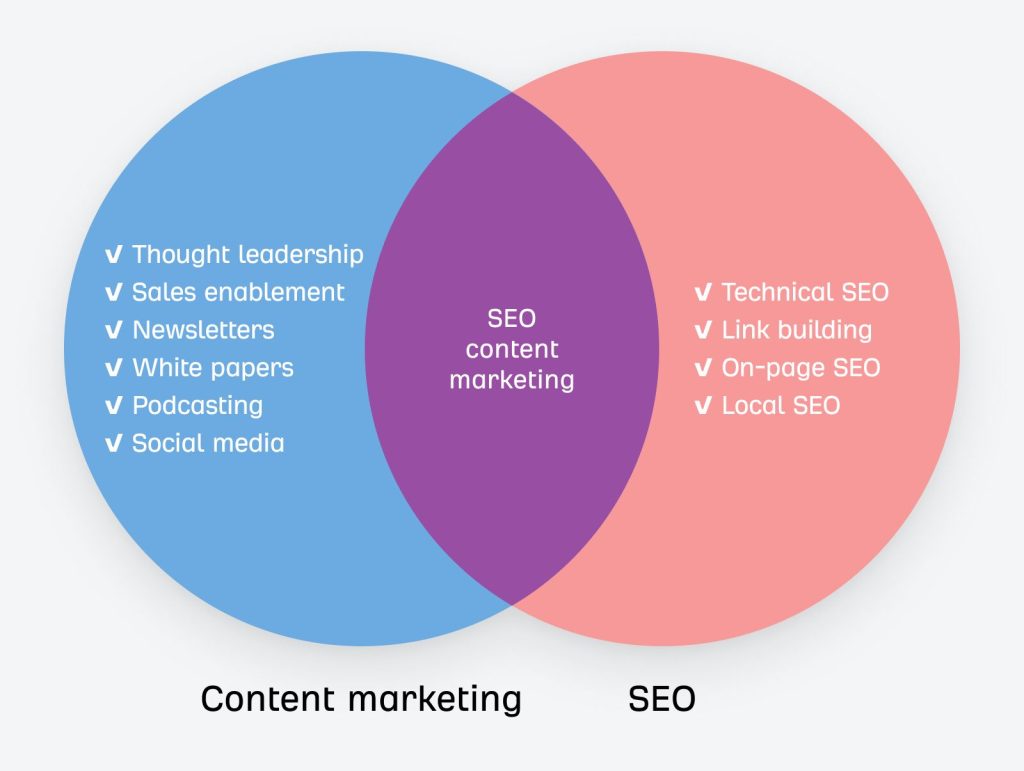
Why long-term content strategies matter
Crypto projects often have complex technology behind them. A well-crafted content strategy can demystify your project for potential users or investors. Regularly publishing educational content (for example, “Beginner’s guide to yield farming” if you’re a DeFi platform, or “How our protocol secures your NFTs” if you’re an NFT marketplace) will attract readers via search engines and social shares.
It positions your team as experts and helps convert curious onlookers into knowledgeable community members. Importantly, content has a long shelf life: a blog post written today can keep bringing in traffic months and years later, especially if it ranks well on Google.
Speaking of ranking, let’s talk SEO for crypto projects. SEO (Search Engine Optimization) is the craft of optimizing your website and content to rank higher in search results for relevant keywords. It’s a critical part of crypto marketing because many people turn to Google with queries like “what is [YourProject] coin” or “best Web3 wallet for NFTs”. If your content appears at the top, you gain that organic traffic.
In a competitive arena with over 13,000 cryptocurrencies in existence by 2024, SEO can be a game-changer for visibility. Embracing SEO best practices – such as having fast-loading pages, using relevant keywords in your site copy, obtaining backlinks from reputable sites – can secure a prominent position for your project in search results.
For example, optimizing your website’s pages (home, blog, documentation) for keywords like crypto marketing, DeFi marketing, Web3 wallet security (tailored to your niche) will help those interested find you more easily.
Best practices for crypto SEO
- Keyword Research: Identify what terms your potential users search for. These could be industry terms (“DeFi lending rates”), problem terms (“Ethereum gas fee solution”), or direct project-related terms. Use tools like Google Keyword Planner or Ahrefs.
- Quality Content Creation: Google rewards content that is original, comprehensive, and useful. Write blog posts that answer real questions your audience has. For instance, a well-written FAQ on your site not only helps users but could show up as a featured snippet on Google if someone searches that exact question.
- On-Page SEO: Ensure each page has a descriptive title and meta description (we provide examples at the end). Use header tags (H1, H2, H3) logically to structure content – as we’ve structured this article with clear headings. Include internal links between pages on your site (linking your product page to a relevant blog post, for example) and make sure your site is mobile-friendly.
- Link Building and PR: SEO isn’t just what’s on your site – it’s also about who links to you. Getting featured in crypto news (PR strategy) or being listed in “top 10” articles can provide valuable backlinks that boost your SEO. Perhaps contribute guest articles to popular crypto publications or talk to bloggers who do project roundups.
- Technical SEO: Ensure your website loads fast and that you’ve taken care of basics like XML sitemaps and HTTPS. Many crypto project sites focus on flashy design but forget that a slow site hurts Google rankings (and user experience).
Remember, SEO is a long-term play. You won’t jump to the top of search results overnight, but consistent content creation and optimization can significantly increase your organic traffic over time. And that organic traffic is extremely valuable – these are people actively searching for what you offer, often with high intent.
PR & Media Outreach
In the cryptocurrency industry, getting coverage in the right media outlets can lend enormous credibility to your project. Public relations (PR) and media outreach involve managing your project’s public narrative and securing placements in publications, whether it’s a feature story on Cointelegraph or a mention in a Bloomberg article about crypto trends.
Getting featured in major crypto publications
Crypto-specific media (like Cointelegraph, CoinDesk, Decrypt, The Block, etc.) are read daily by enthusiasts and investors. Being featured or even mentioned in these outlets can put your project on the map.
How do you get their attention?
Typically through press releases, direct journalist outreach, or accelerator programs. Craft a compelling press release whenever you have newsworthy announcements: for example, closing a funding round, launching a mainnet, a big partnership, or a milestone like a million users. Make sure your press release is clear, concise, and newsworthy – journalists receive countless crypto press releases, so yours needs a hook (e.g., how is your project solving a timely problem or doing something novel?).
Networking is important. Attending conferences and meeting journalists or having a presence in online crypto forums where writers lurk can create opportunities. Some projects also succeed by contributing Op-Eds or expert quotes. If you can establish a team member as an expert (say, on DeFi regulation or on blockchain gaming trends), media might quote them in relevant stories, which still gives your project a mention.
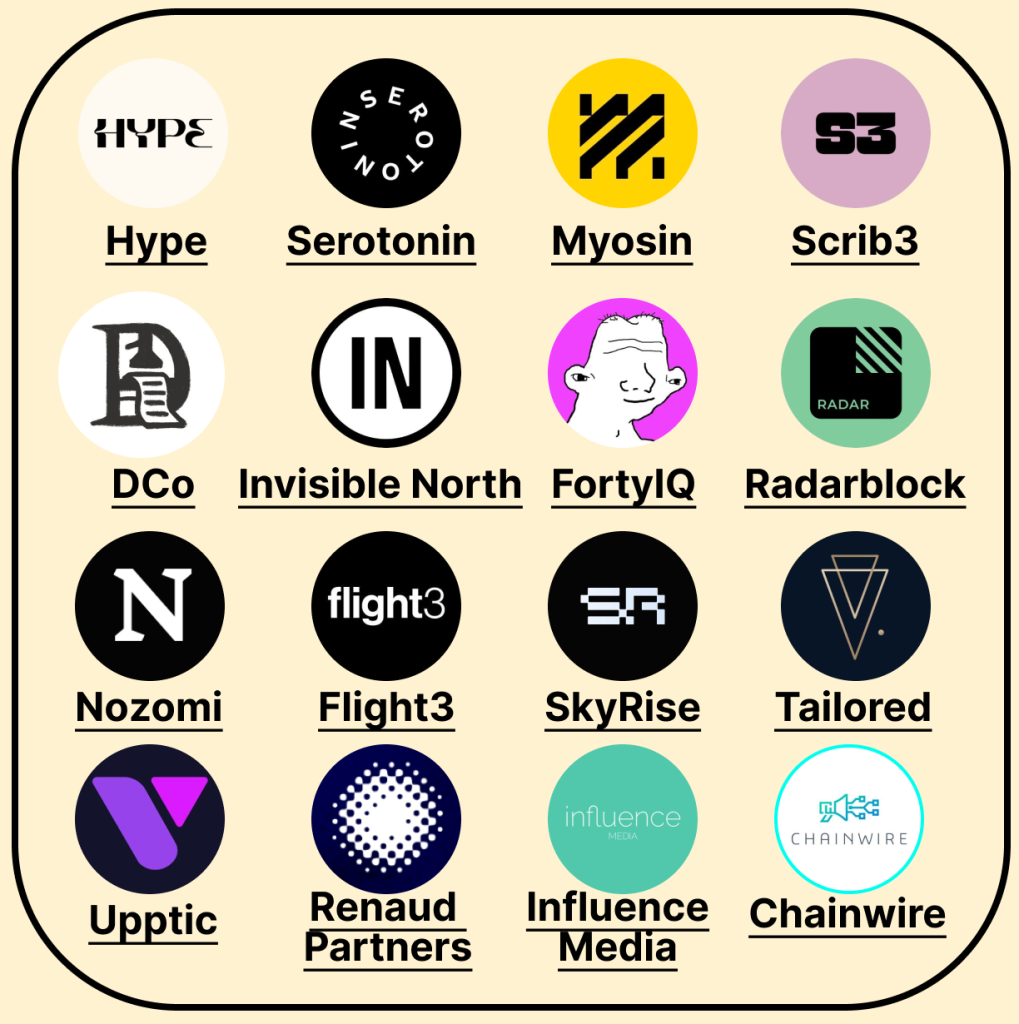
Using PR agencies or crypto marketing agencies
Many founders opt to work with specialized crypto marketing agencies or PR firms that have established contacts and know how to pitch to crypto media. These agencies can help distribute press releases and arrange interviews. If budget allows, an agency can accelerate your media exposure, though be sure to pick one with a solid track record in Web3.
Measuring PR success
It’s important to track whether your PR efforts are paying off. Start with media coverage itself: how many articles or mentions are you getting, and are they in reputable outlets? The quality and reach of the publication matters as much as the quantity of mentions.
Next, look at engagement metrics on those articles – are they being shared on social media? Are people commenting? Additionally, monitor your website traffic and sign-ups around the time of a press hit.
A good press article should result in a noticeable spike in website visitors. Using tools like Google Analytics, check referral traffic from the news site. You can also set up specific landing pages or use UTM parameters in links given to journalists to better track conversions from PR. Ultimately, if your press release announces a token sale or product launch, measure how many people took the desired action (joined your platform, bought tokens, etc.) after reading about it – this is your conversion rate from PR.
Another aspect is sentiment – what is the public saying after a press piece? Sometimes a feature can prompt Reddit or Twitter discussions; keep an eye on the sentiment (positive, neutral, negative) to learn how your message is landing.
Finally, remember that PR is about storytelling. Your project should have a narrative – perhaps it’s the DeFi project bringing banking to the unbanked or the NFT platform empowering artists in new ways. A strong, positive narrative repeated across interviews and articles builds your brand image. Over time, when people keep seeing your project pop up in credible sources, it shifts perception from “unknown startup” to “established project,” which is invaluable.
Overcoming Key Challenges in Crypto Marketing
Marketing a Web3 project comes with its share of challenges. Understanding these hurdles will help you prepare strategies to overcome them proactively. Let’s address some of the most significant challenges: compliance and regulation, mainstream skepticism, and market saturation.
Compliance & regulatory hurdles
As mentioned earlier, advertising anything crypto-related can trigger regulatory scrutiny. Different countries have different laws – for example, the U.S. requires certain crypto businesses to register or only promote to accredited investors in some cases; the EU has its own set of rules under MiCA; and advertising platforms impose their own policies. In 2018, we saw blanket bans on crypto ads on Google and Facebook, which have since been lifted but replaced with strict requirements (e.g., Google now requires crypto exchanges and wallets to be registered with FinCEN or equivalent, to advertise in certain countries).
Navigating these regulations is a challenge that must not be ignored. Compliance should be built into your marketing plan from day one. Ensure that your claims are factual – avoid any wording that could be interpreted as a guarantee of returns (a big no-no for regulators). If you’re running a token sale, know the securities laws in target jurisdictions.
On social media platforms like Twitter, policies have been more fluid. Under new management, Twitter (X) has been relatively more open to crypto advertising, especially for general brand campaigns, but that doesn’t remove your obligation to market honestly and comply with any financial promotion laws. The key is to stay updated on platform-specific rules and obtain any certifications or approvals needed. For instance, if you run ads on Facebook about a blockchain game token, you might need to qualify under their “cryptocurrency products and services” policy.
Working with legal counsel or consultants who understand crypto regulation can save you from costly mistakes. Also, emphasize transparency in your marketing. Include disclaimers where appropriate (e.g., “This is not investment advice,” or disclosure of risks in DeFi). Not only does this keep you compliant, but it also builds trust with an audience that is cautious. Remember, a compliant campaign is also more likely to be a successful campaign in the long run; getting shut down by a regulator or banned by an ad network mid-way can derail your growth.
Addressing mainstream skepticism
Despite the growing adoption of crypto, a large segment of the mainstream audience remains skeptical or ignorant about it. Scams, hacks, and the volatile nature of crypto prices have eroded trust. A 2024 Pew Research survey found that two-thirds of Americans have little to no confidence in the reliability and safety of crypto. As a marketer, you have to work against this headwind.
How do you win over the skeptics (or at least the crypto-curious who are on the fence)?
Education and transparency are your best tools. Avoid overly technical jargon in outward-facing communications – or if you must mention it, always also explain what it means for the user. Highlight real use cases and benefits rather than just the technology. For example, instead of saying “We have a novel Proof-of-Stake consensus mechanism,” say “Our platform uses a modern blockchain technology that, in practical terms, means lower fees and faster transactions for you.”
Building credibility is also crucial. Partnerships can help here: if you have credible backers (reputable VCs, known advisors) or collaborations (maybe your DeFi app integrated with Chainlink or your NFT marketplace partnered with a known artist), promote those.
Third-party endorsements, be it a positive review from a respected YouTuber or an article in a mainstream outlet like Forbes, can chip away at skepticism. Showcasing security measures (audits by firms like CertiK or Hacken, bug bounty programs, insurance funds) in your marketing can reassure people that you take safety seriously.
Another tactic is leveraging social proof from your community. Testimonials and user-generated content can be powerful – if new users see others like them talking about the value they got from your project, it humanizes the technology. Just ensure any testimonials are genuine and, where required, properly disclosed as such.
Finally, patience and consistency are key. Converting skeptics doesn’t happen overnight. Maintain an approachable, professional tone in all communications. Even when faced with tough questions or criticism (you will get them on Twitter, for sure), respond calmly with facts and empathy. Over time, a reputation for honesty and reliability will set you apart in an industry where many are rightfully cautious.

Dealing with market saturation and competition
The crypto boom has led to an explosion of projects. On any given day, hundreds of new tokens or NFTs might launch. Standing out in this crowded market is a huge challenge. As of early 2024, over 13,200 cryptocurrencies exist, though only ~9,000 are active, and the number keeps growing. Users and investors are inundated with choices, many of which sound similar or make similar promises.
To overcome this, you must clearly communicate your unique value proposition. What problem do you solve, and why is your solution different or better? This has to be at the forefront of your marketing.
If you’re a DeFi project, for instance, simply saying “We are another yield farm” won’t cut it if there are 50 others. But if you have a unique mechanism or a better rate or a particular niche (e.g., DeFi for a specific community or region), highlight that distinction boldly.
Competitive analysis is part of marketing – study how your competitors market themselves. If there’s a successful project similar to yours, observe which channels they use and what messaging resonates for them. While you shouldn’t copy, you can get insights into where the target audience hangs out and what they care about.
Also, consider cross-project collaborations as a way to break through the noise. In the spirit of Web3, sometimes competitors can even collaborate if their products complement each other (e.g., a DEX partnering with a lending protocol for mutual benefit). Joint marketing efforts, such as co-hosted events or cross-promotions, can expose you to each other’s communities.
Acknowledge that market saturation means you have to be extra creative. Traditional tactics alone might not suffice. This could mean investing in an unconventional campaign – perhaps a viral meme (remember how a single meme or viral tweet can put a project on the radar of thousands), or an experiential event in the metaverse, or something as simple as a quirky, memorable brand mascot that people latch onto.
Finally, don’t fall into the trap of trying to out-shout everyone else with bigger promotions or outrageous claims – that can backfire and erode trust. Instead, out-smart them with better targeting (use those data insights!), more genuine community engagement, and by delivering actual value so that your users become your evangelists. In a saturated market, word of mouth from real users is pure gold.
How ChainAware.ai Enhances Web3 Marketing Efforts
We’ve touched on many strategies and mentioned data-driven marketing a few times. Now let’s look at a real example of how AI and analytics are changing the game for crypto marketing. ChainAware.ai is a platform that Web3 and crypto project founders might consider to supercharge their marketing through artificial intelligence. We’ll explore how it works and why it represents the future of marketing efforts in this space.
Benefits of using AI for user segmentation and personalized marketing
Traditional marketing often segments users by demographics or web cookies. In Web3, we can segment by behavior. ChainAware.ai, for instance, analyzes on-chain data to categorize users into segments such as traders, lenders, NFT collectors, gamers, etc., based on their wallet activity. This is incredibly powerful – it means you can tailor your message to the specific interests and experience level of each segment. If you know someone is an NFT collector, you might send them content about your upcoming NFT drop, whereas a DeFi trader might get information about your new trading feature or token incentives.
ChainAware’s AI goes further by predicting user behavior. As co-founder Martin explained in an interview, the AI models that detect fraud can be adapted to predict user intentions, enabling targeted marketing messages based on individuals’ past on-chain actions. In simpler terms, the system might predict that Wallet A is likely to be interested in borrowing crypto soon (because it identified patterns similar to other borrowers), so you could target Wallet A with an offer from your lending protocol at just the right time. This kind of predictive marketing was science fiction a decade ago – now it’s becoming reality in Web3.
The result of such fine-tuned segmentation is higher conversion rates. Instead of a generic campaign that might not resonate with half your audience, each user sees the message most relevant to them. Personalized marketing has proven effective in traditional sectors (think Amazon’s product recommendations or Netflix’s show suggestions) – in crypto, personalization can mean the difference between a user glossing over your project versus clicking your link and engaging. Although specific case studies from ChainAware are still emerging (as it’s a relatively new innovation), the promise is clear: by focusing on relevance, you drive up engagement.
How predictive analytics can improve conversion rates for a crypto project?
Let’s illustrate with a hypothetical (yet realistic) scenario. Suppose a crypto exchange wants to increase usage of its new margin trading feature. Using ChainAware.ai, they identify a segment of users who have done multiple swaps on decentralized exchanges (DEXes) but have never done margin trades.
The AI also spots that these users have above-average wallet balances, indicating they might be power users. The exchange then launches a campaign specifically for this segment: an email (or even an on-chain message) informing them about the new margin feature, with a personalized touch like “We noticed you’re an active trader in DeFi. Here’s a 10% fee discount to try margin trading on our platform.”
This campaign, delivered to say 5,000 targeted users, yields a 20% conversion (1,000 users try margin trading), far higher than a generic blast to 100,000 users where maybe only 0.5% (500) respond. The targeted approach reached fewer people but with a message so tailored that more users took action – effectively doubling conversion versus a broad approach. This kind of uplift is the power of predictive analytics in marketing.
In fact, a data-driven marketing platform can unify Web3 marketing components – from social media to on-chain engagement – making it easier for a founder to manage campaigns holistically. Founders report that such integrated platforms save time and improve results because they break down silos (normally you’d have separate teams or tools for Twitter, for Google Ads, for on-chain airdrops; an AI platform could coordinate all of them with unified data).
Comparison with traditional mass marketing approaches
The contrast between AI-driven Web3 marketing and old-school mass marketing is stark. Traditional mass marketing might involve buying banner ads on websites or running a prime-time TV commercial and hoping the right people see it. It’s expensive and inefficient; as noted, the majority of that spend often hits the wrong audience (hence the 95% non-conversion statistic).
In Web3, thanks to AI and analytics, we can do precision marketing – think of it like using a laser instead of a flashlight. Not only does this reduce wasted budget, but it also improves user experience. People appreciate relevant content; they are more likely to be annoyed by ads or messages that have nothing to do with their interests.
Moreover, AI-driven tools can operate 24/7 and adapt in real time. If a certain user segment suddenly starts showing more interest in a different behavior (maybe a spike in NFT activity this week), the system can adjust the campaign for that segment on the fly.
Traditional marketing campaigns often run their course before adjustments are made (like changing a billboard is slow and static). In crypto, markets and trends turn on a dime – AI gives you the agility to keep up. ChainAware.ai also adds value beyond marketing – our platform includes fraud detection and wallet auditing as mentioned earlier, which means the same system helping you market smarter is also keeping an eye out for suspicious activity.
This can indirectly boost marketing because users who see your project taking security seriously (maybe through a “Verified by ChainAware Wallet Auditor” badge or similar) will feel more confident to engage.
To wrap up this section: Embracing AI tools like ChainAware.ai can significantly enhance your Web3 marketing efforts by making them more data-driven, personalized, and efficient. While not every project may be ready to dive into AI from day one, it’s certainly a direction to keep on your radar as you scale your marketing. Early adopters of these techniques are likely to have a competitive edge in acquiring and retaining the crypto users of the future.
Conclusion
Crypto marketing is a dynamic, challenging, but ultimately rewarding field when done right. We’ve covered a lot of ground – from understanding how crypto marketing diverges from the norm, to core strategies like community building and content, to leveraging AI with ChainAware.ai for next-level targeting.
As a Web3 founder or marketer, your goal is to build trust and visibility in an environment where technology is complex and trust can be scarce. By using the practical strategies outlined above, you can promote your Web3 project successfully while avoiding common pitfalls.
Looking ahead, what does the future hold for crypto marketing?
Emerging innovations in blockchain marketing
We anticipate more integration of on-chain elements directly into marketing campaigns. For example, NFT-based loyalty programs might become mainstream – users could earn NFT badges for participating in marketing events, which then grant them perks. These NFTs could be tradeable, adding a gameified layer to referrals or loyalty.
Another innovation is in the realm of decentralized social media: platforms like Lens Protocol or DeSo are enabling on-chain social graphs. Marketing on these platforms might mean engaging not just with content, but with user-owned data and communities in new ways.
We also see a potential rise in metaverse marketing: hosting virtual events or storefronts in metaverse worlds (like Decentraland or others) as a way to engage users. It’s like the virtual equivalent of running a booth at a conference, but accessible globally. Brands outside crypto have already experimented with this; crypto projects, being digitally native, are well positioned to leverage virtual worlds for promotion and community hangouts.
The shift towards AI-driven marketing strategies
Perhaps the most significant trend is the increasing reliance on AI and automation. Just as AI is impacting finance (quant trading bots), customer service (chatbots), and development (AI code assistants), it’s set to transform marketing. We can expect AI-driven campaign optimization where algorithms continuously tweak your marketing mix (ads, content, emails) for optimal performance without human intervention on every decision.
AI might also play a role in content creation – for example, generating personalized newsletter versions for each user segment or even creating thousands of ad variants to see which ones perform best.
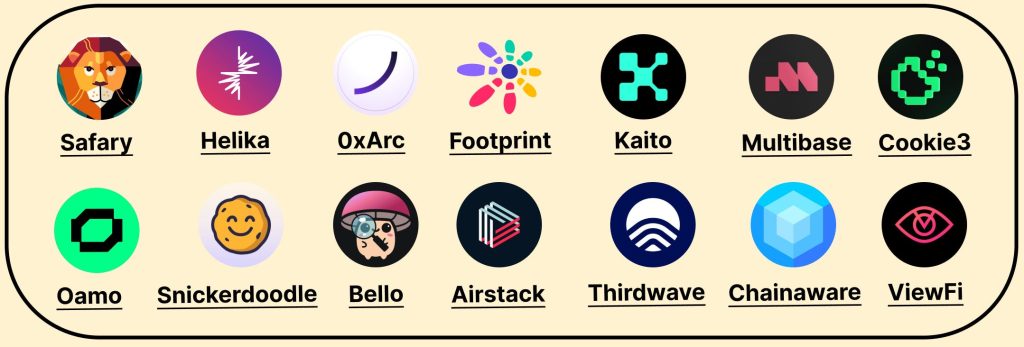
In the near future, AI could help solve one of Web3 marketing’s thorniest issues: attribution (i.e., figuring out which marketing effort led a user to your dApp, in a world where users are anonymous). By analyzing patterns, AI might attribute a conversion to, say, a combination of that user seeing a tweet, then an on-chain message, then visiting your site. This level of insight would allow marketers to fine-tune budgets and strategies with precision previously not possible.
Moreover, as AI agents (autonomous bots) become more advanced, we might see them engaging users directly. Imagine an AI community manager in your Discord that can answer questions 24/7 in a friendly, accurate way, or an AI that can interface with users’ wallets to offer them support or rewards proactively. This might sound far-fetched, but projects are already experimenting with AI bots in Telegram/Discord that help with onboarding new users by walking them through setup steps.
In conclusion, the world of crypto marketing will keep evolving alongside the Web3 ecosystem it serves. Founders and marketers must stay agile, keep learning, and be willing to adopt new tools and tactics. What remains constant is the need to understand your audience and build genuine relationships – whether through a Discord chat or via a personalized AI-driven campaign.
By combining time-tested marketing principles (like knowing your customer and delivering real value) with Web3-specific techniques (like community token incentives and on-chain analytics), you’ll be well-equipped to cut through the noise.
The future is bright for those who can adapt. Crypto and Web3 aren’t going anywhere – and as the industry matures, marketing will be the bridge that connects innovation with widespread adoption. So take these insights, apply them to your project, and go turn your marketing into an engine of growth. Good luck, and may your community grow and your conversions soar!

